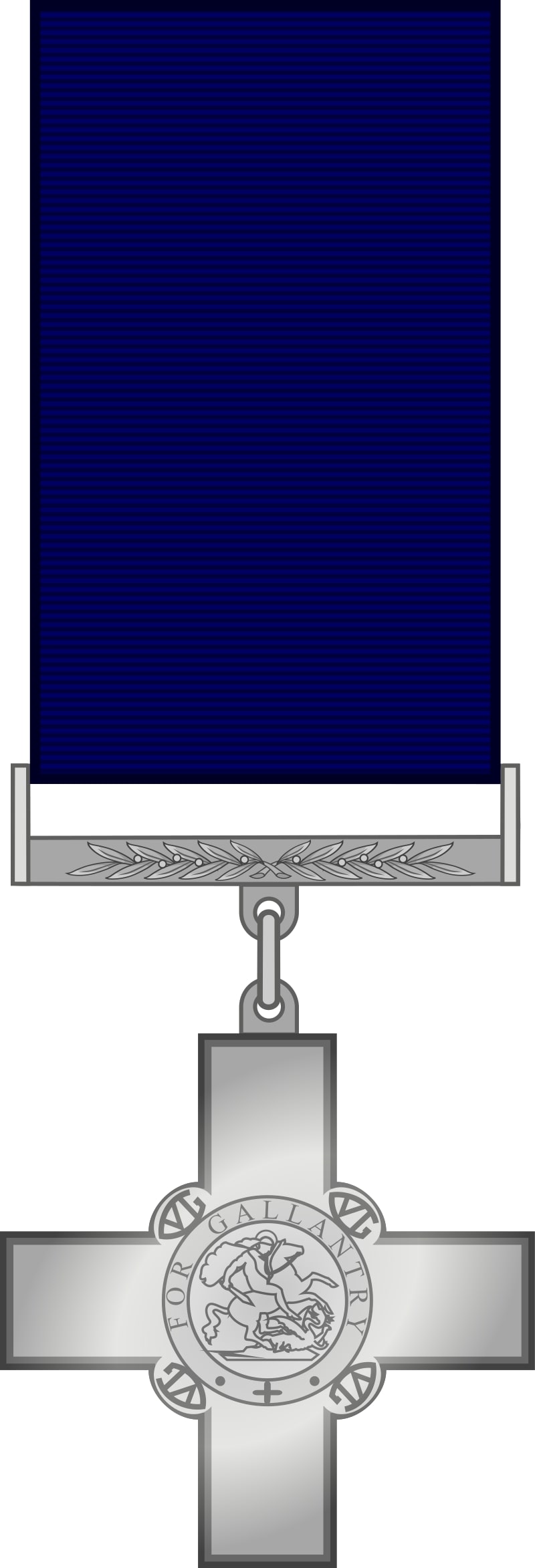
“Whimsy” columnist CLIVE WILLIAMS takes a close look at all sorts of medal, starting with the George Cross.
DURING the Christmas holidays I read fellow “CityNews” columnist Robert Macklin’s excellent 2012 book “One False Move” about Royal Australian Navy mine defusers in World War II.

Four of them were awarded the George Cross (GC), as well as other medals, to make them Australia’s most highly decorated group of servicemen during that conflict.
The GC is not as well-known as the Victoria Cross (VC), but it’s the highest award bestowed by the British government for bravery in a non-military conflict situation.
In the British honours system, the GC has been considered equal in stature to the VC, the highest military “gallantry” award (gallantry meaning in the face of the enemy). No one has received both medals.
Australia introduced its own award system in 1975, with the creation of the Australian Bravery Decorations, Order of Australia, and National Medal.
The GC was then replaced by the Cross of Valour (CV) awarded “for acts of the most conspicuous courage in circumstances of extreme peril” and became the highest Australian bravery award for non-conflict situations.
The Australian (and British) VC is the highest ranked bravery award in the Australian honours system for conflict situations. It takes precedence over the CV – although it’s unlikely anyone will ever receive both.
The British GC was awarded to 23 Australians – 11 military personnel and 12 civilians. Although Australia established the CV in 1975, it was not until 1992 that Australia officially stopped recommending Australians for British honours.
During the period 1975 to 1992, one Australian was awarded a GC. (Constable Michael Pratt, of the Victoria Police who, unarmed and single handed, attempted to arrest two dangerous armed criminals, and was seriously wounded in the process.)
Five CVs have been awarded since the introduction of our national honours system and five Australian VCs.
Are bravery and courage the same thing? Probably not. It’s said that bravery is a spontaneous act. It happens in the heat of battle or on the spur of the moment. By contrast, courage is about being afraid, being mindful of the risks, and making a conscious decision to risk one’s life anyway.
The courage displayed by Australian mine defusers was ongoing – one officer defused more than 300 mines. That was at a time when Germany was developing a range of anti-handling devices to try to kill those defusing German mines. And many defusers were killed.

There are, of course, many who deserve awards but don’t get them. As eminent historian Michael Howard noted: “The important thing when you are going to do something brave is to have someone on hand to witness it”.
A lot also rests on the writing of the citation and its endorsement as it works its way through the approval system.
There have been quotas in the past on how many British gallantry medals can be awarded to Australians, irrespective of how many deserving nominees there were. This was probably to avoid a repeat of the battle of Rorke’s Drift situation where 11 VCs were awarded to British soldiers who had no option but to stand and fight.
The Order of Australia recognises Australians for “outstanding service and contributions” to the community. The Order has four levels: Companion of the Order (AC), Officer of the Order (AO), Member of the Order (AM) and Medal of the Order (OAM).
Anyone can nominate an Australian for the Order of Australia. I nominated one person for organising Missing-In-Action recovery work in Vietnam. My nominee, Jim Bourke, was made an AM.
Every year there are complaints about senior public servants nominating each other and receiving honours for doing their very well-paid jobs. But in any honours system there will always be inequalities. Inevitably, those who are deserving, but low profile, will miss out.
As British comedian Arthur Smith sadly noted: “I’m an award-winning comedian. Unfortunately, the award was for swimming.”
But never lose heart. Former President George Bush, a noted academic non-achiever, encouraged a graduating class as follows: “To those of you who received honours, awards and distinctions, I say well done. And to the C students, I say you, too, can be president of the United States.”
Clive Williams is a Canberra columnist
Who can be trusted?
In a world of spin and confusion, there’s never been a more important time to support independent journalism in Canberra.
If you trust our work online and want to enforce the power of independent voices, I invite you to make a small contribution.
Every dollar of support is invested back into our journalism to help keep citynews.com.au strong and free.
Thank you,
Ian Meikle, editor









Leave a Reply